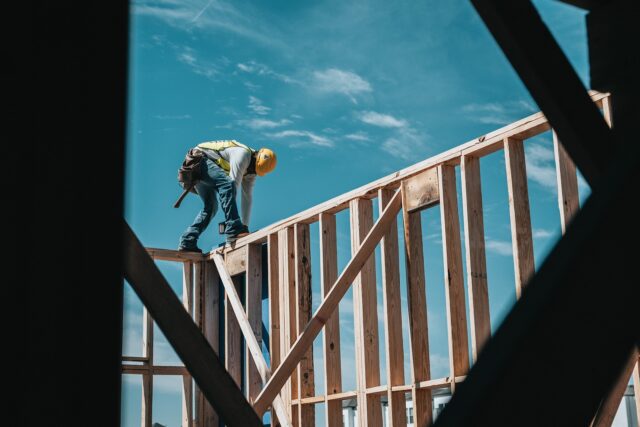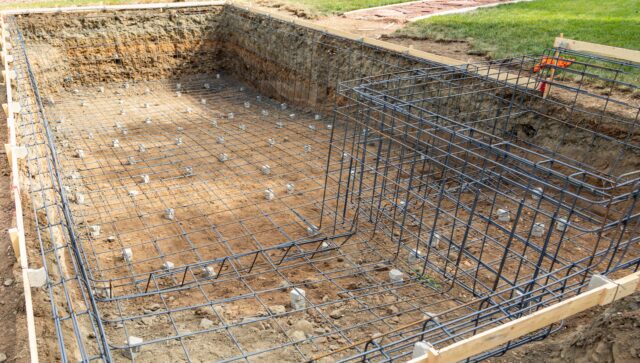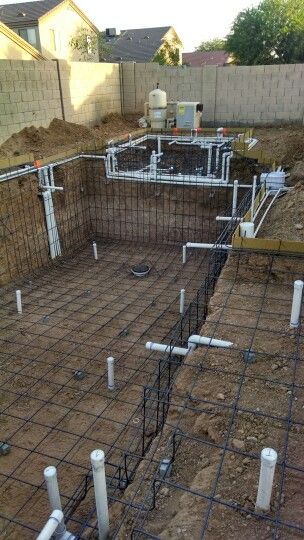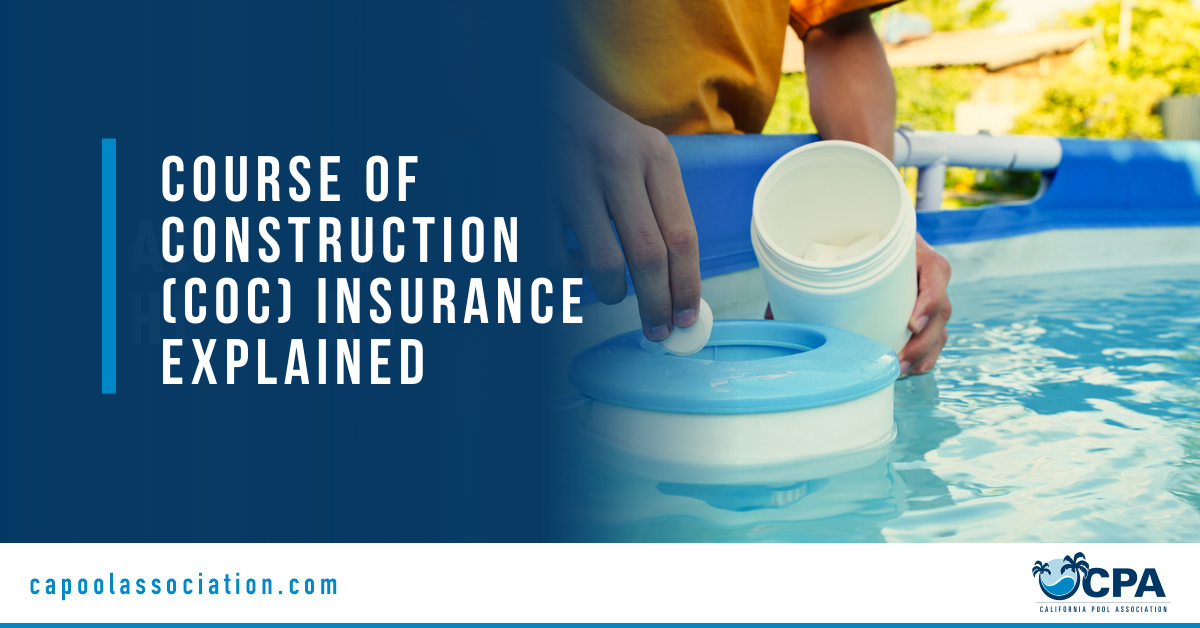Course Of Construction (COC) Insurance Explained for 2025
What Is Course of Construction (COC) Insurance?
Managing a commercial construction or renovation project involves materials, labor, timelines, and budgets. An essential layer of protection is Builder’s Risk Insurance, also known as Course of Construction (COC) Insurance. It helps pay for losses to the structure and covered materials while work is in progress.
This guide traces back to the California Pool Association, which advocates for best practices in pool construction and renovation. Whether you are installing a new resort pool or remodeling a commercial facility, understanding COC coverage keeps projects on track.
Why Is COC Insurance Critical in 2025?
Construction sites face daily risks such as fire, theft, vandalism, and weather damage. Without COC coverage, one event can halt progress and stress cash flow. Lenders often require proof of an active policy before releasing funds, protecting owners, contractors, and other stakeholders.
Is Builder’s Risk the Same as COC?
Yes. The terms are commonly used interchangeably. These policies cover buildings under construction or renovation, including:
- The structure itself (even if only partially completed)
- Materials and equipment on-site, in transit, or stored off-site
- Additional costs like architectural or engineering fees tied to covered losses
- Eligible soft costs if delays arise from covered causes of loss
Coverage typically ends when the project is completed, occupied, or otherwise reaches policy‑defined milestones (details below).

What Does COC Insurance Cover?
A standard policy helps protect physical items directly involved in the work:
- Building materials, supplies, and on‑site equipment
- Partially completed structures (e.g., shells, framing, pool frameworks)
- Materials in transit or stored temporarily off‑site
Common Covered Perils
- Fire, lightning, explosion
- Wind and hail (limits may apply in coastal zones)
- Theft and vandalism
- Damage by vehicles or aircraft
Always review the declarations and form wording to confirm included causes of loss and any territorial or project‑specific limits.
What Isn’t Covered?
Typical exclusions include:
- Earthquake and flood (unless added by endorsement or separate policies)
- Normal wear and tear, rust, corrosion, or gradual deterioration
- Faulty design, workmanship, or materials (professional liability)
- Mechanical or electrical breakdown, and system testing
- Employee theft
Many carriers offer endorsements to add or broaden coverage (for example, earthquake or flood). Ask your agent how to address gaps for your specific build.

How Much Does COC Insurance Cost in 2025?
Pricing varies by project value, location, timeline, and deductible. For small businesses, market snapshots place average premiums around $100–$150 per month. Some insurers also price COC at about 1%–5% of total project value, especially for larger or complex builds. Your carrier will underwrite factors like wildfire, hurricane, or flood exposure and the length of your schedule.
Key cost drivers: project value, site hazards (e.g., coastal or wildfire zones), construction duration, security measures, and chosen deductibles.
Who Should Purchase It?
Owners and contractors both buy COC policies. Owners may purchase coverage directly to protect their investment, while contractors sometimes include the premium in bids so the work, materials, and anticipated profit are protected under one policy. For California pool builders, including COC in project estimates is common and clarifies protection from day one.
General Liability vs. COC Insurance
General Liability Insurance covers third‑party bodily injury and property damage (for example, a visitor is injured on-site). COC Insurance covers damage to the project itself—materials, supplies, and the in‑progress structure—when the loss arises from covered causes. Most projects need both.
When Does Coverage Begin and End?
Coverage generally begins when you become legally responsible for the covered property and the policy is in force. It usually ends at completion, when the building is occupied or put to its intended use, after a set number of days post‑completion, or upon issuance of a certificate of occupancy—depending on the form and endorsements. Always check your policy for exact triggers and any grace periods.

New Considerations and Trends (2025 and Beyond)
Climate and Catastrophe Risk
Wildfire, hurricane, flood, and severe convective storms continue to shape underwriting and availability. Some carriers now offer specialized riders, higher deductibles in hazard zones, or tighter terms.
Supply Chain and Inflation
Delays and higher material costs make in‑transit and soft cost coverages more valuable (e.g., design fees, additional interest, re‑permitting expenses tied to covered delays).
Local Regulation
In California, seismic and environmental standards influence design choices, timelines, and costs. Coordinate with local authorities and your agent to align coverage with code requirements and inspection milestones.
How Does This Impact the Insurance Industry?
Demand for specialized construction products is rising, particularly in catastrophe‑exposed areas. Insurers are refining terms and leveraging endorsements for climate‑related risks, while agents work more closely with contractors and associations to tailor coverage that satisfies lender requirements and keeps projects financeable.
Builder’s Risk Insurance is an essential component of any construction project, offering comprehensive protection against a wide range of risks and facilitating smooth project completion. For more detailed information or to secure a policy tailored to your project’s needs, consider reaching out to the California Pool Association or a similar organization in your region.
Frequently Asked Questions (FAQs)
Do I need COC insurance for a small project like a pool remodel?
Yes. Even small projects face theft, vandalism, or weather damage. Policies can scale to project size and duration.
Does COC cover worker injuries?
No. Worker injuries fall under Workers’ Compensation, not Builder’s Risk.
Can I add earthquake or flood coverage in California?
Earthquake and flood are typically excluded but can be added via endorsements or separate policies. Ask about options specific to your site.
When exactly does coverage end?
It depends on your form. Common triggers include completion, occupancy, being put to intended use, or a specified number of days after completion. Some forms reference the certificate of occupancy; some specify time‑bound windows post‑occupancy.
Will my lender require COC insurance?
Often, yes. Lenders frequently require an active COC policy before releasing funds.
Sources
- California Pool Association
- California Pool Association – A resource for best practices, regulatory updates, and insurance guidance specific to pool construction projects in California.
- National Association of Insurance Commissioners (NAIC, 2024)
- NAIC – Consumer Insurance Insights – Provides guidelines, consumer education, and official reports on various insurance products, including Builder’s Risk Insurance.
- Insurance Information Institute (III, 2024)
- Insurance Information Institute – Offers comprehensive data and explanations on Builder’s Risk Insurance coverage specifics.
- Construction Coverage (2024)
- Construction Coverage – Builder’s Risk Insurance – Industry analysis and cost statistics, including average monthly premiums and policy recommendations.
- California Department of Insurance
- California Department of Insurance – Official information on state-specific regulations for commercial insurance policies, including those for construction projects.
- American Institute of Architects (AIA)
- American Institute of Architects – Insight into architectural standards and how design considerations can interact with insurance needs.
- Federal Emergency Management Agency (FEMA)
- FEMA Flood Insurance – Provides flood-risk maps and guidelines for supplemental insurance coverage, especially useful for properties in flood-prone areas.
- United States Geological Survey (USGS)
- USGS Earthquake Hazards – Up-to-date seismic activity data, crucial for those seeking additional coverage for earthquake-related risks.

